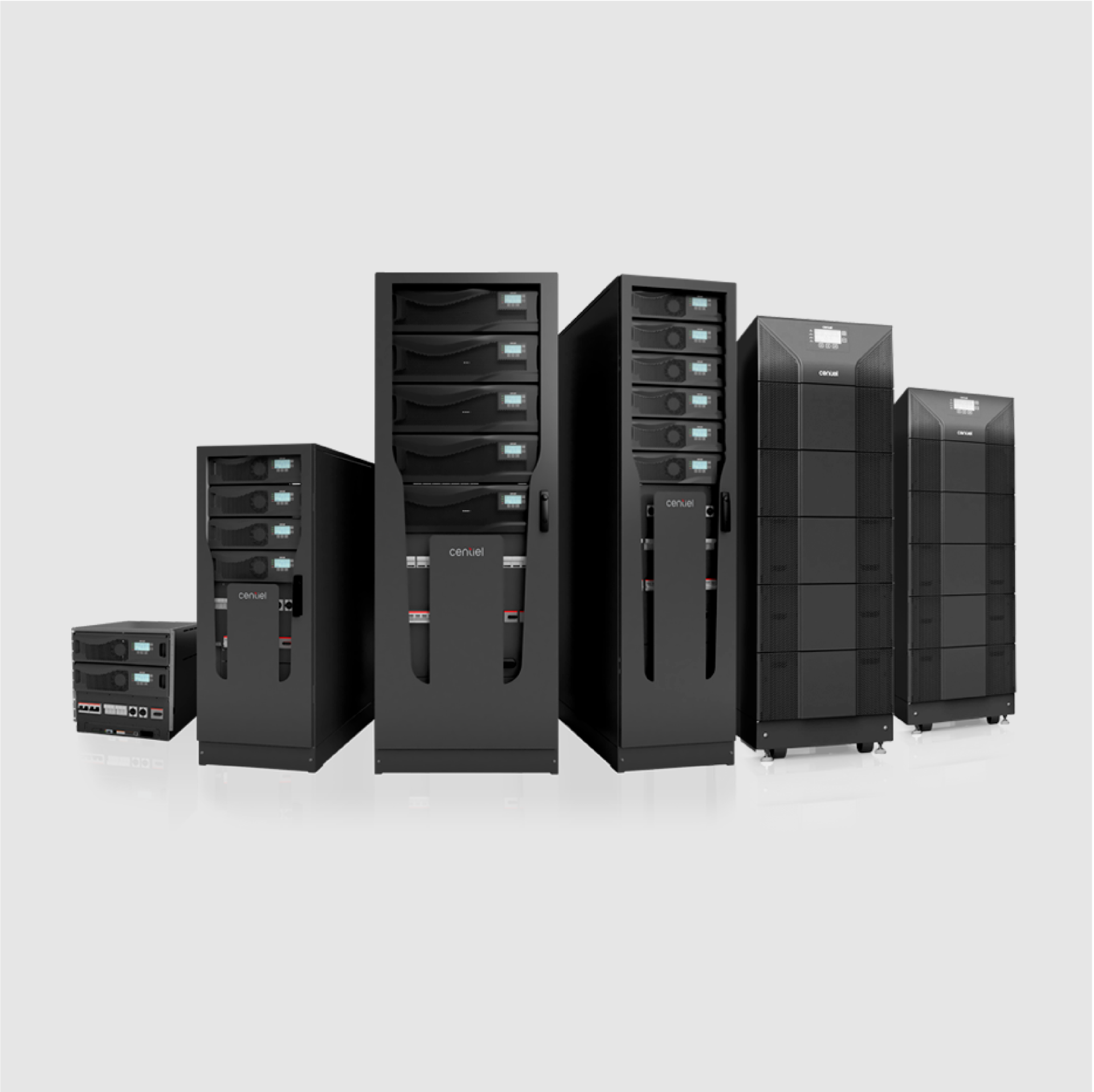How to correctly size a UPS system remains an important question! A UPS with the wrong size impacts both CAPEX (acquisition costs) and OPEX (maintenance costs), and how much could this cost you in the future? To make the right choice, you need to know the actual load at the time of installation, but more importantly, the load profile over time. This is where Elinex can assist you!
How has the load historically behaved? What is needed today? What might be needed in the future? Understanding this profile can lead to a more accurate roadmap for the path ahead. It also means that the UPS is correctly sized on day one, but with a realistic understanding of how day two might actually look.
Using a Centiel Modular UPS system can help manage your roadmap and provide the flexibility needed to adapt to planned or unplanned changes in the load profile. This technology offers the ability to add UPS modules to the actual load (right size) and add further modules as needed. A true modular UPS not only needs the ability to physically adapt the load profile but also requires the functionality to automatically optimize the efficiency of the overall system.
Centiel's True Modular UPS system is designed with Maximum Efficiency Management (MEM) as standard. MEM automatically puts modules that are not needed to support the load into "sleep mode" and ensures that all modules within the system have the same life cycle and share the same run-time. They age together and last longer. This is particularly beneficial for installations where the load profile regularly fluctuates. For instance, a recent customer only needed two of the three UPS modules to support the load and maintain redundancy for six months of the year. MEM functionality is useful for the medical, business, and financial sectors, where demand can change daily, influenced by peak and off-peak hours. Even colocations and data centers, where load demand can be influenced by changes in customer demand or contract changes, can use this technology to continuously optimize their system efficiency.
This works well for systems with fluctuating loads, but what about where the load simply increases? How do customers know when to add more modules without oversizing? Making an early estimate of possible 'growth spurts' can help make the right decision on day one when selecting UPS module sizes (e.g., 10 kW or 50 kW). This can keep the cost of adding power modules low and prevent excessive investment upfront. Don't forget that when adding UPS modules, you only need to buy what is required for that growth phase.
External monitoring of the UPS with resources like Simple Network Management Protocol (SNMP) is also important because it allows you to see what is happening in real-time from any location, and it will alert you to unexpected issues. Monitoring will also provide information on how the UPS is loaded and whether it can be better balanced, optimizing the system's capacity. Meticulous monitoring and regular service visits can also identify times when the UPS may have become overloaded. In this situation, users receive an alarm that stays on until the overload is resolved. All UPS systems are designed to operate on overload capacity for a short period. However, if this happens regularly, it may be an indication that it is time to add a module to maintain capacity or redundancy.
A flexible system is an integral part of supporting those "growth spurts" on the journey to day two. For seamless integration into live systems, it is also necessary to ensure that the UPS has the ability to safely add UPS modules without downtime. Being able to completely isolate and test new equipment within a live system (safe-hot-swap) before it accepts any load reduces any errors before introducing them into the rest of the system. In a system without safe-hotswap, any problem with a module going into a live system can have catastrophic consequences, endangering your load. Careful power continuity management can maximize power protection while minimizing total ownership costs.
At CENTIEL, our design team has been at the forefront of technological development for many years. We are trusted advisors to some of the world's leading institutions. We have developed our groundbreaking 4th generation true modular UPS system, CumulusPower, which offers leading availability of 99.99999999% (nine nines) through its Distributed Active Redundant Architecture (DARA), combined with low total ownership costs (TCO) through its Maximum Efficiency Management (MEM) and low energy losses.
Questions?
Do you have questions about a power backup solution? We're here to help. Contact us at info@elinex.com or call us at +31 180-415711.
Text: Draeckensteijn Media


.jpg?resolution=775x625&quality=100&type=webp)
.jpg?resolution=775x625&quality=100&type=webp)

.jpg?resolution=775x625&quality=100&type=webp)